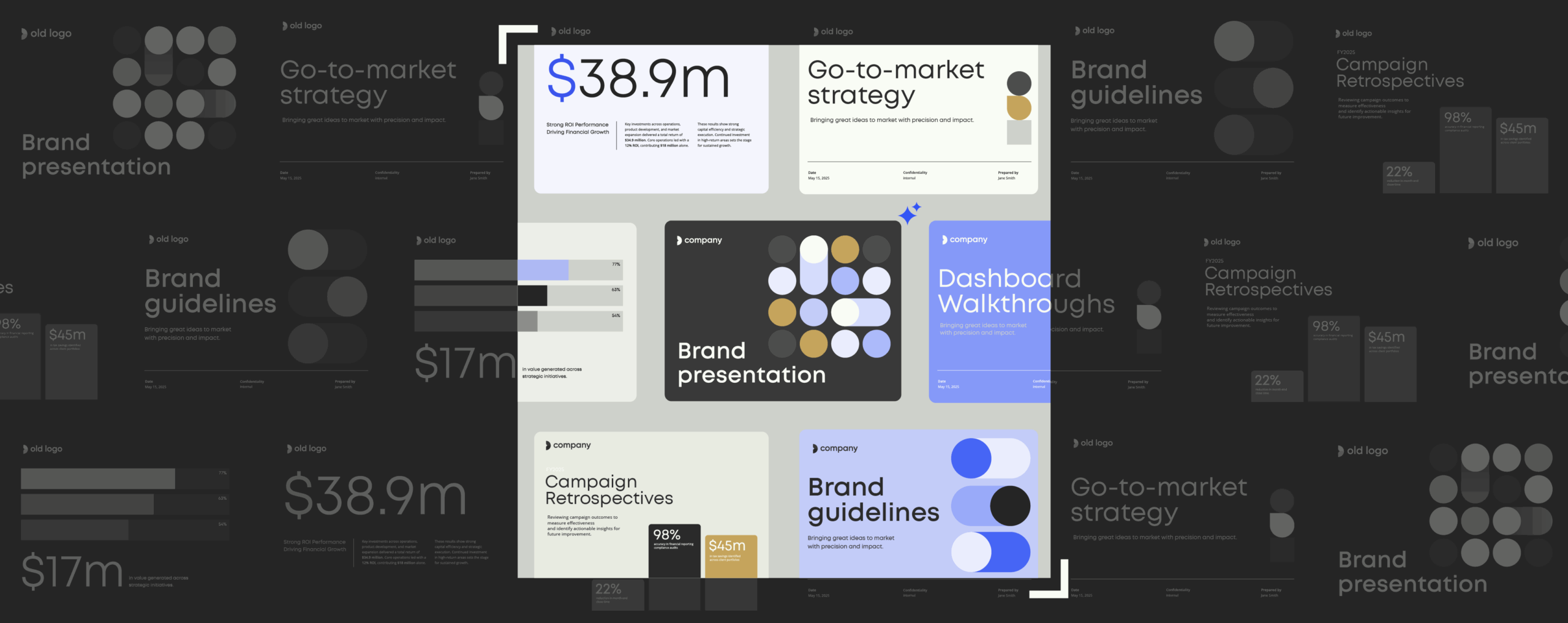Why you should have a brand platform

Intro
Brands today have to go above and beyond to stand out among competitors, and a solid brand platform is a central starting point for achieving a good position in the market.
But what is a brand platform, why is it important to have, and how can brands enforce a brand platform? That’s what we’re writing about today.
What is a brand platform?
A brand platform is a framework to build an identity for a brand. A thorough brand platform will be a guiding document for the company in its efforts to position itself in the market and achieve brand recognition among customers.
Why is it important to have a brand platform?
A brand platform serves as the foundation for any brand. It is upon the platform that branding efforts can be made to build-out the brand to stand out among competitors. Brand platforms are the starting point for branding guidelines that enable employees to portray the brand in a consistent manner.
With a great brand platform, companies can ensure their brands are consistent in every touchpoint with customers and other stakeholders. This builds trust, which is an important factor in customer relationships – 81% find trust as a very important factor in deciding whether to do business with a brand or not.
The components of a brand platform
A brand platform is built up of several components, some of which we will take a closer look at here.
Vision and mission
The vision and mission of a brand are two of the fundamental aspects of a brand platform. A vision is a long-term view of how the brand sees the future and what it has set out to do. A mission is a statement that describes how and why the brand will achieve this.
Brand values
Brand values are the guiding principles of a brand. They specify what the brand believes, how it will act, and how it will interact with customers and other stakeholders.
Visual identity
A brand’s visual identity involves its logo, color palette, font, and other visual elements that are representative of the brand.
Tone of voice
To develop a thorough brand platform, a tone of voice should be defined for the brand. The voice of the brand is what customers and other stakeholders meet when they interact with the brand across different platforms.
Positioning
Another component of a brand platform is a positioning statement that describes how a brand will stand out among its competitors. This is where the brand defines its unique selling point.
Benefits of having a great brand platform
- Consistency in all touchpoints: Once a brand has a platform, all employees can be on the same page and portray the brand in the same way. This can lead to the brand being perceived as consistent and professional by customers.
- Streamlined branding efforts: With a brand platform as the foundation for branding efforts, marketers and other employees will know where to start every time they begin a content creation process. This can lead to streamlined workflows as there’s a clear foundation to build from.
- Competitive edge: A well-defined brand platform serves as the foundation for the brand. If the foundation is strong, there’s a great starting point to build a strong brand upon and gain a competitive edge in the market.
Risks of not having a brand platform
- Brand inconsistency: Without a brand platform, employees will not have a foundation for their branding efforts. This can lead to inconsistent branding as employees are not aligned in how to portray the brand, which can decrease trust among customers.
- Inefficiency workflows: Lack of a brand platform can be a disadvantage for marketers and other employees creating content as they do not have a clear starting point for the content production process. This could lead to ineffective workflows and redundant work, decreasing productivity and wasting time.
- Reputational risk: A brand platform sets out the rules of how to portray the brand. If there are no rules, employees are left without guiding principles in how to act. This can open the brand up to reputational risk and lead to incidents that could be damaging to the brand.
brand platform
Steps involved in creating a brand platform
Creating a brand platform is a highly individual task that depends on the goals of the brand’s founders. However, there’s a series of general steps involved when a brand platform is developed. These include:
- Defining the vision and mission of the brand
- Developing a brand story and voice
- Crafting visual elements to serve as brand assets
- Creating guidelines for how the brand should be portrayed
Example of a good brand platform
Apple is the most valuable brand in the world and a large part of the value can be attributed to its strong brand platform. The brand has a clear vision and mission, memorable tagline – Think Different – and a great, clean visual identity.
Importantly, the brand’s platform is enforced by ensuring a consistent face in all touchpoints with customers. This has enabled Apple to imprint their name and logo into consumers’ minds which has led to the highest level of brand recognition.
The benefits of Apple’s strong brand platform are clear: due to the value of the brand itself in the eyes of consumers, Apple can sell at premium prices or put their logo on any product and customers will buy it.
How Templafy can help enterprises manage their brand platform
To create a great brand, it’s not enough to just create a brand platform. It has to be managed and enforced, otherwise it will just be another document saved to a folder that nobody checks. This is where Templafy comes into the picture.
Templafy is a brand management platform that helps enterprises manage all aspects of their brand. Using the platform’s brand asset management tools, managers can centrally organize brand assets so that all employees always use the most up to date assets.
Additionally, Templafy ensures automatic brand compliance by continuously monitoring employees’ content production processes. This enables companies to enforce their brand platforms and ensure all content is in line with the goals of the brand as well as internal and external guidelines.
The Templafy platform integrates with widely used office applications like Office 365 and Google Workspace, creating an effective workflow for employees who don’t have to switch tabs to access verified brand assets, but have them available within their preferred editing application.
case
How Coloplast enforce their brand platform with Templafy
Coloplast is a leading supplier of healthcare products and services. Coloplast needed to ensure that content in line with the company’ brand platform was made available centrally to employees across departments and decided to implement Templafy.
Now, Coloplast employees can access approved brand assets directly within Office 365, knowing that content is always on-brand and compliant with brand guidelines so they can focus on core work.
“Our local brand management departments can now edit corporate content directly and apply respective changes immediately – a facet our IT admins are particularly intrigued by as it takes everyday management off their shoulders and thus adds more hours to their day”
– Head of Corporate Branding at Coloplast Wakana Pivoteau Sakihama says.
Enforce your brand platform with Templafy
A brand platform is imperative for any company that wants to have a clean, consistent identity and ensure compliance. Templafy is a market leader in helping companies enforce and enhance their brand platforms. Try it out for your brand – schedule a product tour with Templafy today!


